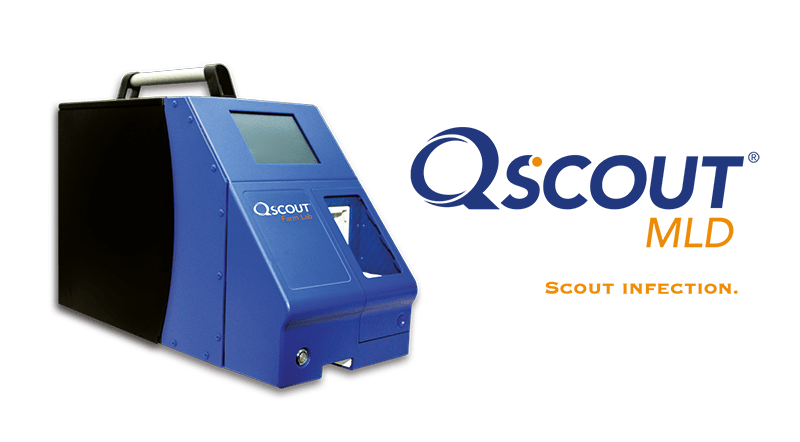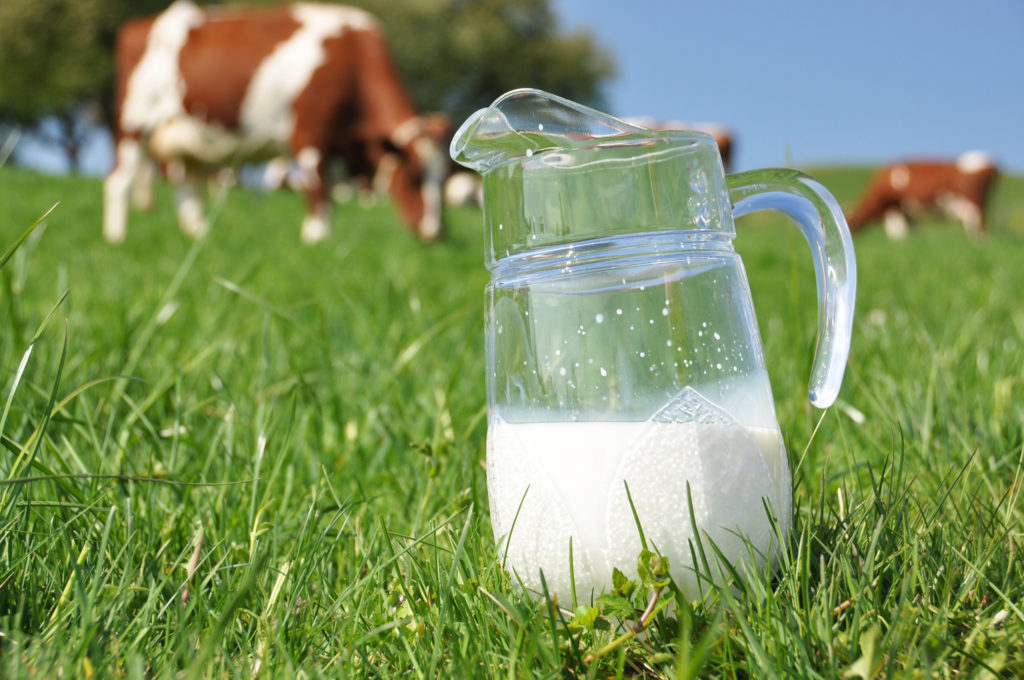Meet the Qscout MLD
Analyze the somatic cell count per quarter in 3 minutes!
- By MLD: Milk Leukocyte Differentiation
- Rapid detection of subclinical Mastitis
- Targeted dry-off
- Up to 600kg more milk possible in sub clinical cows

Prevention of diseases such as mastitis instead of healing
MoreMilk2Day is committed to dairy farmers who want to produce more, healthy milk by keeping cows free of pathogens. MoreMilk2Day offers an early disease detection system that focuses on preventing diseases such as mastitis instead of curing them. Our goal is to support the dairy farmer in keeping healthy cows that produce fair and delicious milk. On this website you can order the necessary tests.

How does it work?
1. Taking the Sample
2. Analysis
3. Evaluation
4. Advice
Information = Knowledge
At MoreMilk2Day we believe in optimizing your business process through continuous research. Register now and select the research that is most interesting for your company.
What can you expect from us?
Healthy
The analyses of MoreMilk2Day help you to keep your herd healthy. We strive for the lowest possible use of medication, after all, prevention is better than cure.
Reliable
The tests you can order from us will be processed at a qualified lab. You can expect honest and independent advice from us.
Sustainable
We help you to keep your cows healthy. Healthy cows produce more milk throughout their lives. Together we contribute to sustainability.
Flexible
We like to think along with you in different ways. At MoreMilk2Day you have the opportunity to receive both one-off and long-term support for your dairy farm.
Frequently asked questions
The analysis of the PCR sample shows you CT values. The CT value represents a theoretical value, which reflects the number of DNA molecules.
A CT value of 40 is optimal, this means that no specific DNA molecule of the measured pathogen could be measured. The lower the measured value, the more DNA is present.
However, the same CT values can reflect different levels of bacterial pressure in different pathogens, for example: with E. Coli one can see that already at a value of 30 a big problem is shown, and that one has to react, while at a value of 30 with Sc.Uberis one has to be alert, but there is no reason to make changes yet.
The graph is based on average values from the laboratory, indicated by signal colours, so that you can easily see on which pathogens you need to react. There will often be values around the critical limit; you will then be able to read which measures you can take for each pathogen. If more than one pathogen is shown in red you can have MM2D draw up an advice plan.
By means of monthly PCR samples you can see the effect of this plan on the presence of these pathogens in your tank milk/litter.
- Make sure there is at least 1 milking of all cows in the tank and activate the stirring function of the tank and let it stir for at least 5 minutes.
- Take 10 ml of milk at the top of the tank with the pipette provided and fill the tube with it. If this does not work, drain approx. 1 l of milk in a clean measuring cup and take 10 ml of milk with the pipette.
- Close the tube with adhesive tape. Seal the cap of the tube extra by putting tape around it.
- Fill in the form provided; check the date and note the number of the tube on the form.
- Place the sample and the form in the return envelope provided and post it.
Take a sample of at least 10 % of the total cubicles. Do this as follows:
- Take a clean bucket
- When taking the sample, use a milker's glove.
- Take a handful of material in the back of the cubicle. (where the udder is lying)
- When the required quantity of samples has been taken from the cubicles to be sampled, mix the contents of the bucket well.
- Take 150 - 200 grams of the material and fill the supplied packaging.
- Seal the packaging with adhesive tape.
- Fill in the form provided; check the date and write down your description of the sample (group no./stable no.) on the form.
- Place the sample and the form in the return envelope provided and post it.
- Pre-foam the teat for 30 sec.
- Put on a clean glove
- Clean the teat with a paper cloth
- Decontaminate the teat tip with an alcohol wipe
- Milk 5 jets of milk away, fill the tube for ¾
- Close the tube with adhesive tape. Seal the cap of the tube extra by putting tape around it.
- Fill in the form provided; check the date and note the number of the tube and of the cow on the form.
- Put the tube(s) and the form in the return envelope provided and post it.
In our webshop; with each product you can indicate how much you need and MoreMilk2Day will send you the sample tubes. If you subscribe for one year, we will automatically send you a package every 3 months.
Do you need more tubes or are you planning a purchase screening? Please contact us so we can arrange this for you.
As a rule within 4-5 working days; your sample is on its way to the MoreMilk2Day laboratory for 2-3 days (depending on your location) after which it takes 1-2 days for the results to be visible in your personal MoreMilk2Day Dashboard. You will receive an email from us as soon as the dates are available.
Usually you will see an increase in the tank cell count. Flakes may also be visible in the tube filter. By taking a critical look at the milk control and performing a CMT test on suspect animals, subclinical cows can be traced.
If this is not sufficient, an individual sample can be taken. If you are not sure how/where to start, we advise you to call in a MoreMilk2Day specialist for a company consultation (by phone or on location).
One often sees an increase in the tank cell number. Flakes can also become visible in the tube filter. By taking a critical look at the milk control and performing a CMT test on suspect animals, subclinical cows can be traced.
If this is not sufficient, an individual sample can be taken. If you are not sure how/where to start, we advise you to call in a MoreMilk2Day specialist for a company consultation (by phone or on location).
There are many ways of doing this;
- By purchasing cows
- By visitors in your barn who come between the cows
- By yourself; because you have/have visited several companies.
- By contaminated feed/water (mainly environmental bacteria)
Mastitis is an inflammation of the udder tissue. Mastitis is caused by bacteria that enter the udder. These bacteria can be cow bound, environmental bound or rare bacteria.
Hygiene around milking plays an important role in this, also the barn environment of the cows should not be forgotten. Think of box litter.
Experience for yourself what we can do for you and plan a telephone consultation.
Adequate action on the basis of tank milk analysis can minimize mastitis outbreaks. By knowing which pathogen is active it is possible to focus on possible hygiene measures, which need to be adjusted.
- By buying / buying cows always have them tested.
- By having visitors follow a protocol and wear company clothing
- By complying with the protocol and changing work clothing yourself
- Check your feed/water regularly for the presence of pathogens.
- Hygiene around milking plays a particularly important role in mastitis. In principle one can say that the final hole of the teat in the milking parlour opens and she goes back into the parlour with a still open final hole. In this relatively short time, bacteria can enter the udder. By treating the cows well, offering a clean cluster and allowing them to return to the barn protected, the development of mastitis around the milking can be minimized.
- Also the barn environment should not be forgotten, because a cow is lying around for 12 to 14 hours a day.
- During an extensive company consultation of MoreMilk2Day, the contamination of a surface will be measured at 25 locations on your farm and you will receive specific advice. By repeating this after six months you will get confirmation whether your approach works. (and by the results of your tank milk research of course!)
Which product fits your situation and company?
MoreMilk2Day has various products, from research to advice.